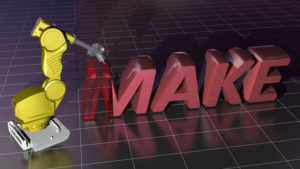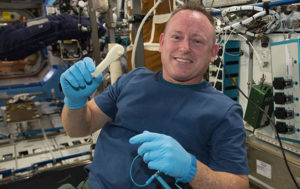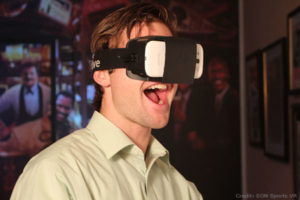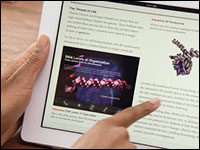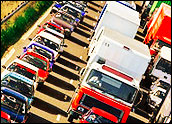
Google’s wow factor is still at large — this time in a self-driving car that’s tootling about California in a series of test runs. It’s easy to get carried away with the dream of a personal (albeit automated) chauffeur and the implied robotic “get out of jail free card.” The inebriated and textholics among us — and possibly speeders, light runners and the accident prone too — are relishing the thought. But is this dream likely to blow into reality — or just get blown apart?
“Whether a self-driving car will be allowed to operate on the open roads across our nation will be a state-by-state decision subject to regulation by the National Transportation Safety Board , the Federal Department of Transportation, as well as state regulatory bodies,” Samuel Coffey of the law firm Abramowitz, Pomerantz & Coffey told TechNewsWorld.
“Further, one can expect federal and state laws from Congress and/or all 50 states to address the issues of self-driving cars,” he said. “Certainly, laws will be developed on when the operator of a self-driving car will be responsible for safe operation of the vehicle if the vehicle violates the rules of the road.”
That, however, is where the law is headed — not where it stands now. Right now, the question stands largely unaddressed by lawmakers.
“Lawyers and judges will have to deal with the problem of fitting a square peg, [i.e.] revolutionary technology, into a round hole — existing tort law,” Howrey partner Scott Schutte, a member of its global litigation practice group, told TechNewsWorld.
Defining ‘Driver’
“Remember that the law is firmly rooted in the principle of stare decisis, meaning that we look to precedent to tell us what to do,” Marc Weingarten, a partner at Locks Law Firm , told TechNewsWorld. “This simply does not apply to robot-driven cars, as there is virtually no precedent.”
Nonetheless, the question of whom to hold responsible for driving offenses will at first be decided under current laws.
“There is a uniform traffic code adopted for most jurisdictions setting forth the ‘rules of the road,’ as well as a fairly uniform body of law with respect to the privilege of holding a motor vehicle operator’s license, and regulation of drivers who attempt to operate vehicles while impaired,” explained Coffey.
Alrighty then, but exactly what does that mean in terms of tickets, fines and escalating car insurance penalties?
“The owner of the car will almost always be held responsible for property damage or injury caused by the car, regardless of who or what is driving,” Matthew Meyer, principal partner of Ansa Assuncao, told TechNewsWorld.
“A negligent driver is responsible,” he added. “If a defect in the car — including any software or hardware problems — causes an accident, then the manufacturer of the product can also be held responsible.”
Under the Influence of Google
What if a driver has had too much to drink and allows the car to drive him home rather than drive himself? After all, the car is — so far at least — billed as self-driving. Indeed, it’s touted as safer than a human driver. If the car is involved in an accident en route, can the driver at least escape a DUI charge?
“Catching the offender might be more difficult, but I don’t expect automated driving while intoxicated to be treated any differently than in normal operation,” Michael Weathersby, senior partner at Evert Weathersby Houff , told TechNewsWorld.
“We have all heard of cases in which an intoxicated person is charged with DUI while sitting still in a vehicle with the keys available for operation,” he explained. “I doubt public policy or law enforcement will see your technology as a solution to the DUI issue.”
Indeed, DUI laws are the very last thing lawyers expect to see change due to the advent of the self-driven car.
Google’s Gotcha
Few in the legal world believe the human driver will get away with anything by claiming Google did it. While current law holds human drivers and owners liable, that will likely be fortified by legal clauses in Google’s terms of service, operating manuals and other user documents. In other words, Google will require the presence of a human driver in the car as a “failsafe,” which will place additional onus on the human in the equation. However, Google isn’t the only party that is likely to make this assertion.
“In the case of self-driving technology, legislators are going to react by requiring a human driver in the vehicle, and the human driver is going to have to be sober and ready to operate the vehicle,” said Schutte.
That may not be a blessing for Google in the end.
“This is going to pose a conflict with how this technology can be monetized,” explained Schutte. “For example, one selling point of the technology might be that it would allow the driver to be productive in the car — working, reading or watching TV while travelling, but that would conflict with a law requiring the driver to pay attention.”
Plus, Google wouldn’t get off the liability hook entirely, either.
“The human ‘failsafe’ would have some liability, but Google would likely also incur some liability since their software is the primary ‘driver,'” Andy Crouppen, a lawyer at Brown & Crouppen, told TechNewsWorld.
Legal scuffles would begin shortly after any accidents occurred, and plenty of folks would be squirming at the implications.
Parceling Blame
“Nearly anytime a serious accident occurs in our society, a claim is made against anyone arguably responsible,” said Ansa Assuncao’s Meyer. “If a serious accident occurs while a vehicle is being operated by a computer, and the computer arguably caused the accident, then we would expect to see a claim brought against those responsible for the computer.”
Ah, but there’s the rub. Will lawmakers, judges and juries make the correct distinctions between hardware and software roles? Can they discern which software is responsible for what, and where a glitch lies (especially if open code is used), and who put it there or failed to resolve it? Conversely, will this technological confusion offer cover for Google and app developers?
“Expect a great deal of litigation to go on between the manufacturer of the car and the manufacturer of the component parts concerning whose fault it is for the product failure,” said Coffey. “Certainly, Google could be a component part manufacturer of hardware and/or software.”
App developers, too, could be legally designated component parts. Thus, the parceling of blame could cover many industry players. But don’t expect the finger-pointing to stop there.
“There will be claims — if the product was modified and not in its original condition sometime after it left the manufacturer, but before the accident — which will be the rich subject of litigation and expert testimony,” said Coffey, of Abramowitz, Pomerantz & Coffey.
So what might all this look like in the hallowed halls of justice?
“The design defect side of the case will likely be preempted by federal law and the related approval process, while operational malfunction in a given incident and similar issues will remain a subject of litigation,” said Evert Weathersby Houff’s Weathersby.
With such high liability stakes, will the Google car move from concept to commercial product? Yes, it likely will. Product liability is the same whether you are making lawn mowers or cars. Liability is weighed and accounted for by manufacturers prior to production. In other words, it is common business practice to add the costs for litigation and liability into the unit costs. Companies know that the gavel bangs, and it bangs for them.
“But don’t expect the providers to roll over and become easy targets,” advised Weathersby.



